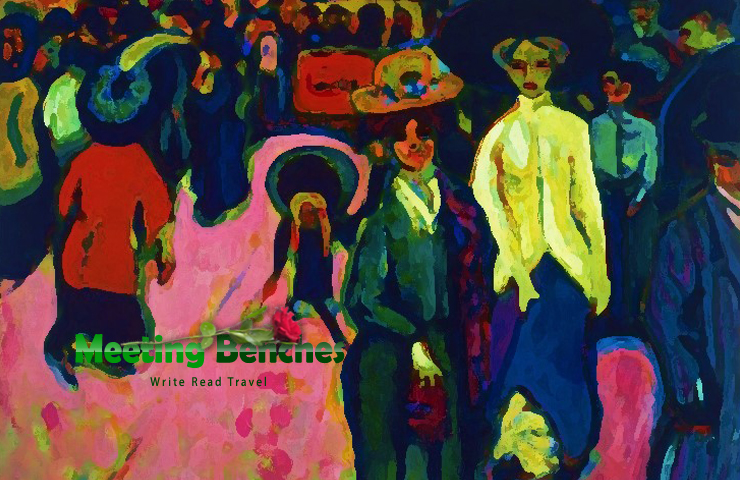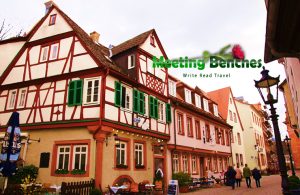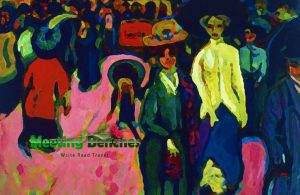





After the WWI, when the Nazis rose to power, he was a victim of their campaign against degenerate art. Depressed and ill, he eventually committed suicide. He painted conflicting attitudes about the past and present, illustrating fears about humanity’s place in the modern world. ERNST LUDWIG KIRCHNER has come to be seen as one of the most talented of Germany’s Expressionists. He was a driving force in a art’s group that flourished in Germany, before World War I. Where – with your eyes – you can see his 1923’s “The Sleigh Ride”? At the Germanisches Nationalmuseum, in Nuremberg (Germany).

Since he believed that this better expressed the vitality of the human body, he depicted the figure in movement. For him, the studio was an important nexus, the moment where art and life met. ERNST LUDWIG KIRCHNER was born in Aschaffenburg (Germany), into a May day. He volunteered for army service, but soon suffered a breakdown and was discharged. His family moved frequently, so, he attended schools in Frankfurt, Perlen and Chemnitz. In 1901, he began studying architecture in Dresden, aquiring a wide range of studies in addition to architecture, such as freehand drawing.
His mature style was really personal especially because for its psychological tension. In 1930, he began to experience health problems due to smoking, and when the Nazi party took power, he was forced to resign from the Prussian Academy of Arts. His late landscapes? Often allegoricals, with human beings unencumbered by civilization. On a June day, ERNST LUDWIG KIRCHNER took his own life by gunshot, and was laid to rest in the Waldfriedhof cemetery. You can admire his 1907’s “Sitting Woman” at the Pinakothek der Moderne, in Munich.
The intellectual property of the images that appear in this blog correspond to their authors. The sole purpose of this site, is to spread the knowledge of these artists and that other people enjoy their works. To pursue this issue, you can digit: https://www.youtube.com/watch?v=1usS6zhPUMg
An invitation to rediscover the world with eyes full of wonder Spring, a symbol of…
Australian Aboriginal and ancestral spirits who created the world "Leaving bitterness behind is a journey…
Poetry and Culture of the French Pacific Islands You’re intrigued by the idea of an…
A Journey Where Wisdom Comes from Listening, Not Speaking The Indigenous Peoples of North America…
Passion and Tragedy in Shakespeare's Verona The desire to escape from the everyday and take…
Provence Trip, Inspiration for All Beauty Lovers "Sometimes you leave to forget, other times to…
This website uses cookies.